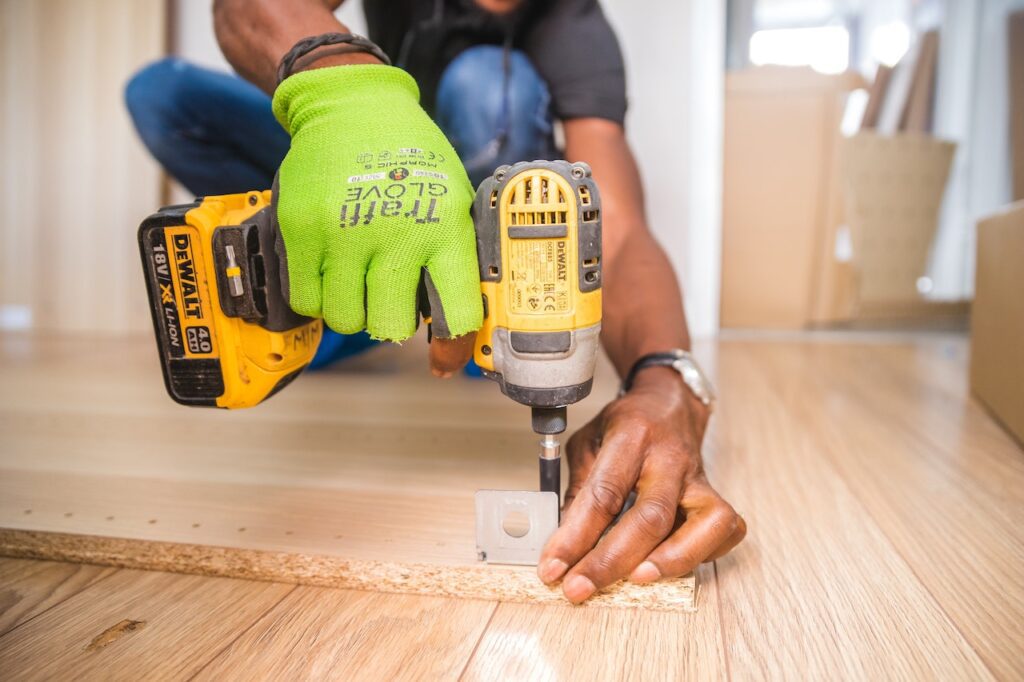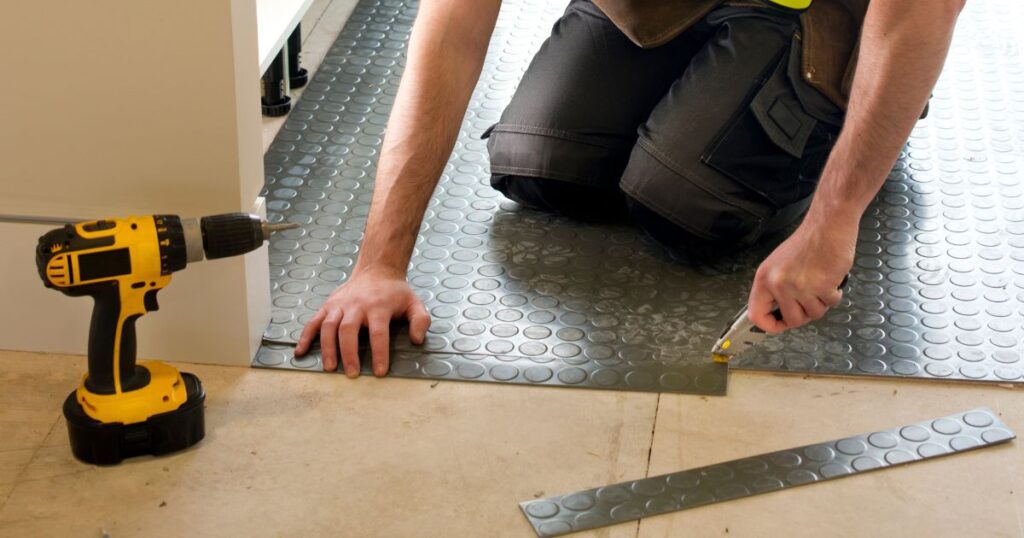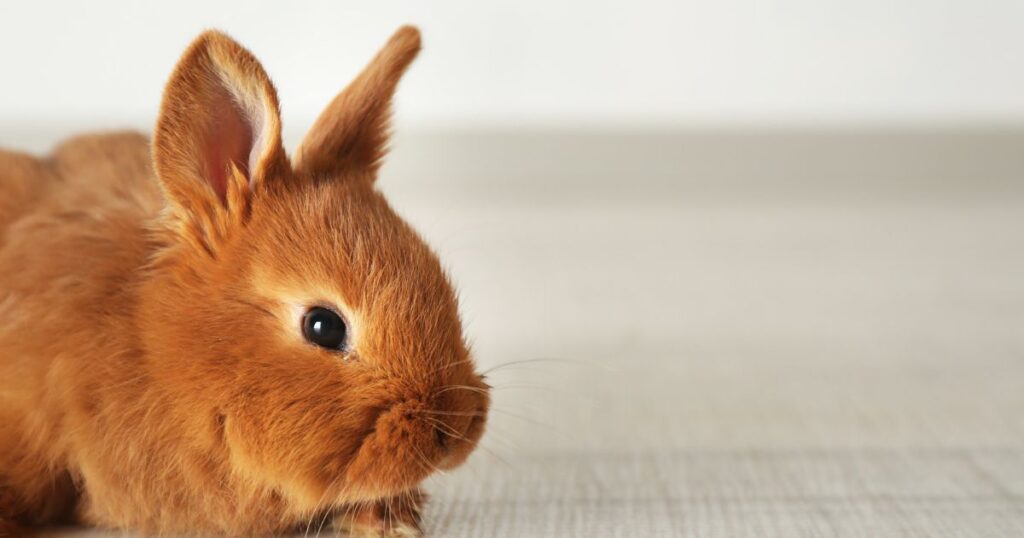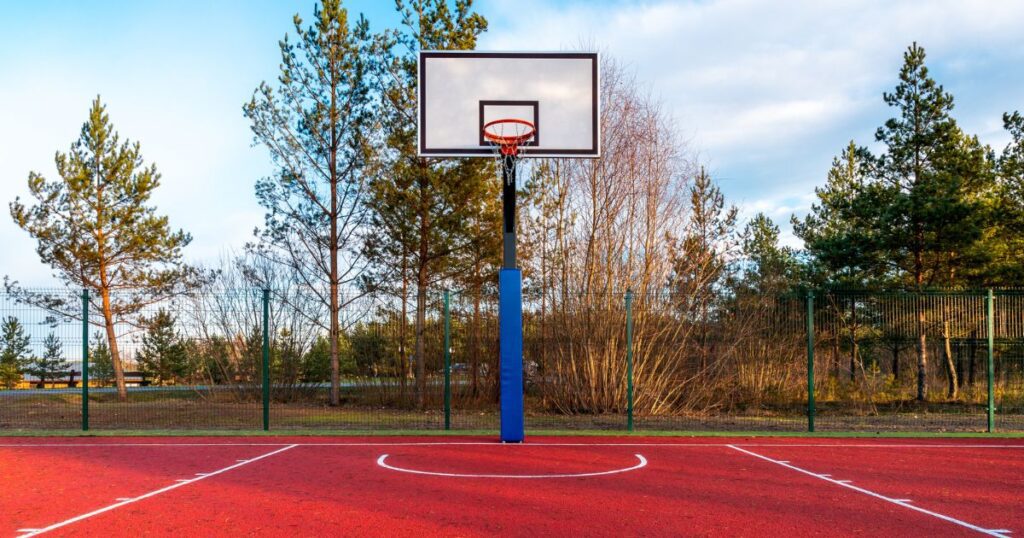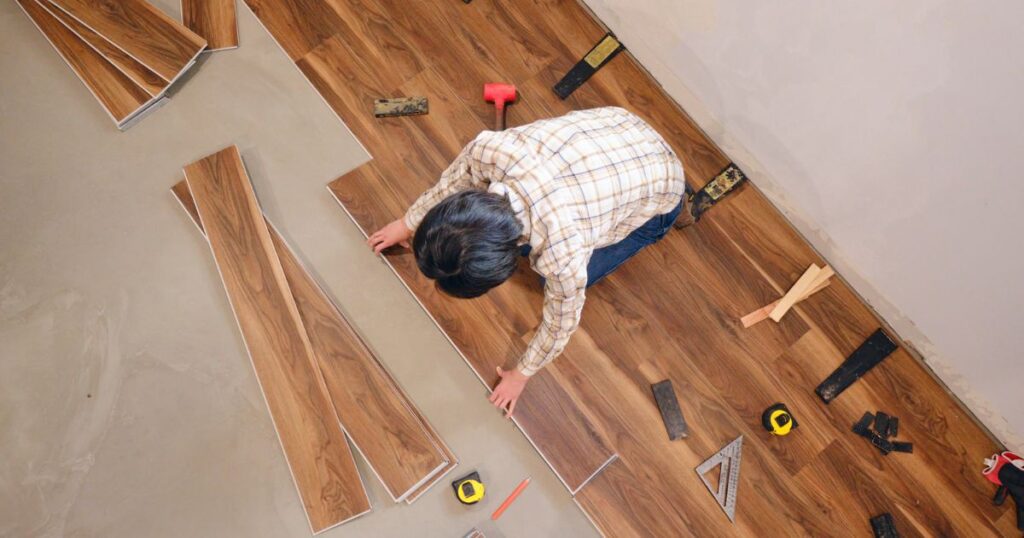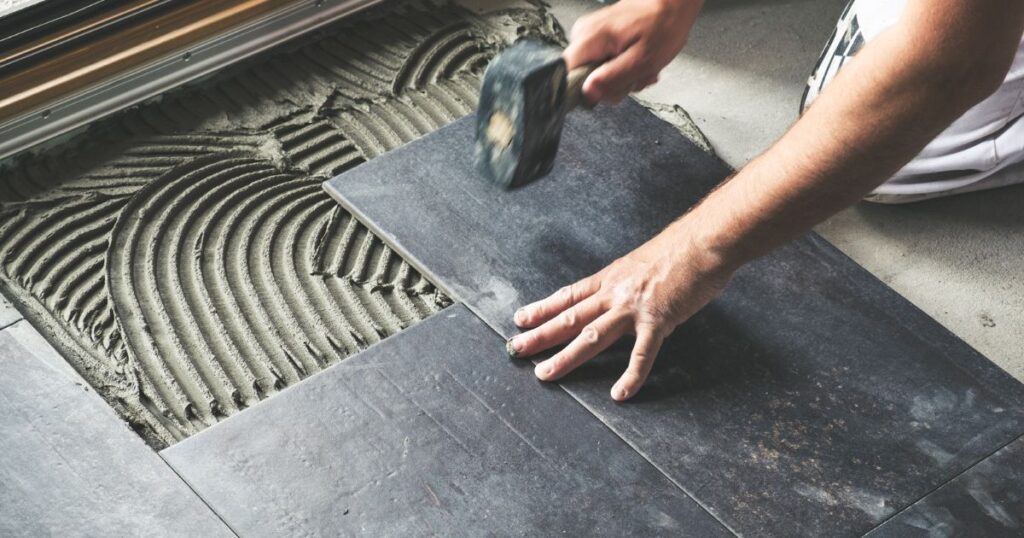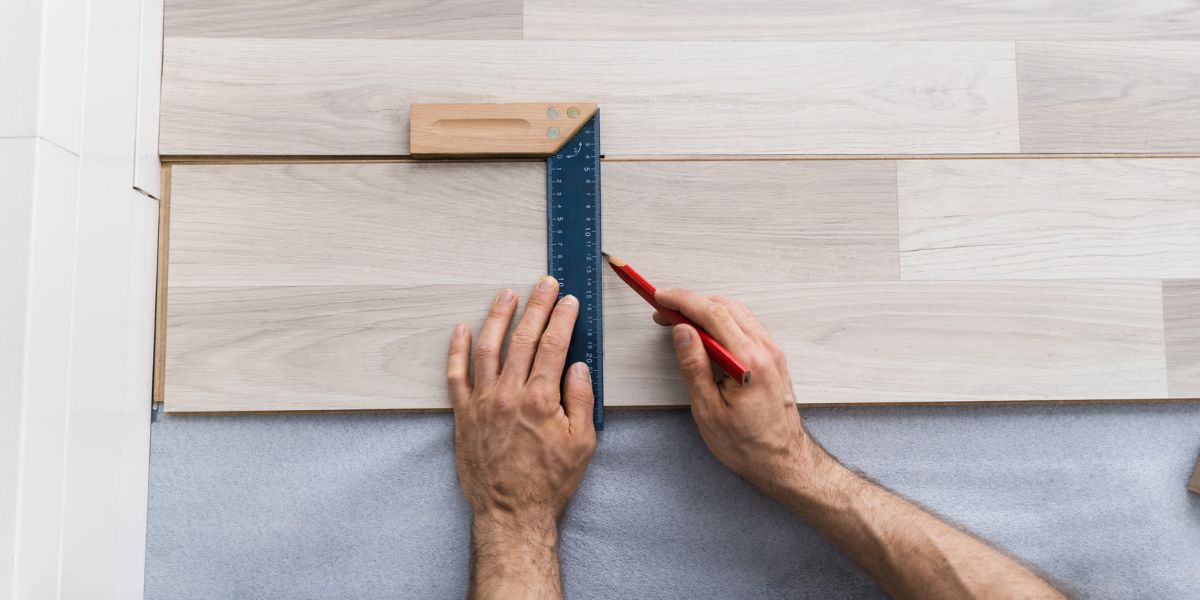
Flooring is an essential aspect of interior design and architecture. It creates the foundation for any space and sets the tone for the overall aesthetic.
In modern times, there are countless flooring options available in the market to choose from, but one that stands out is Vinyl Composition Tile (VCT) flooring. VCT flooring has become increasingly popular in recent years due to its practicality and versatility.
What is VCT Flooring
VCT flooring is a type of resilient flooring made up of vinyl chips or pellets that are mixed with limestone and plasticizers. The mixture is then heated under high pressure to create tiles that are cut into standard sizes, usually 12 inches by 12 inches. These tiles come in various thicknesses ranging from 1/8 inch to 1/4 inch.
Importance of VCT Flooring in Modern Architecture and Interior Design
VCT flooring has become a go-to option for architects and designers who want to achieve a modern look without breaking the bank. It offers an affordable alternative to hardwood or natural stone while still providing durability and longevity. Moreover, VCT flooring provides endless design possibilities as it comes in a variety of colors, patterns, and textures.
This allows designers to create unique floor designs that complement any interior style or aesthetic preference. In addition, VCT flooring is easy to maintain which makes it ideal for high traffic areas such as commercial spaces like hospitals, schools, airports, or retail stores.
Its durability also makes it suitable for residential settings where families may have pets or children who cause considerable wear and tear on floors. Overall, VCT flooring has become a reliable choice within modern architecture and interior design because of its practicality combined with its ability to create endless design possibilities at an affordable cost.
The Basics of VCT Flooring
What is VCT flooring made of?
Let’s start with the basics. VCT stands for Vinyl Composition Tile. It’s a type of flooring made from vinyl and limestone, and sometimes other fillers or pigments are added to give it color or texture.
Now, some people may turn their noses up at the word “vinyl”, thinking it’s cheap or low-quality, but let me tell you – that couldn’t be further from the truth. In fact, VCT is incredibly durable and long-lasting.
The vinyl provides flexibility and resilience, while the limestone gives it strength and stability. And because it’s made from these two simple materials, it’s also very affordable compared to other types of flooring.
How is it installed?
Installing VCT flooring is not rocket science, but it does require some skill and knowledge. First, the subfloor must be properly prepared – any bumps or irregularities must be smoothed out, and the surface must be clean and dry.
Next comes laying out the tiles in a pattern that works for your space. This can be a bit time-consuming because you want to make sure everything lines up correctly.
Then comes cutting tiles to fit around edges or corners – this requires precise measurements and attention to detail. Once all the tiles are laid down, they need to be sealed with a special finish that protects them from wear-and-tear as well as stains or spills.
Advantages and disadvantages of using VCT flooring
Now let’s talk about why you might choose (or not choose) VCT flooring for your next project. Advantages: – Durability: As I mentioned earlier, VCT is incredibly tough stuff.
It can withstand heavy foot traffic as well as spills or stains without showing wear. – Affordability: Because it’s made from simple materials and can be installed relatively easily, VCT is a cost-effective choice for flooring.
– Versatility: VCT comes in a wide range of colors and patterns, so you can get creative with your design choices. Disadvantages:
– Maintenance: While VCT is durable, it does require regular maintenance to keep it looking its best. You’ll need to sweep and mop regularly, as well as apply a fresh coat of finish every few years.
– Coldness: Vinyl doesn’t retain heat very well, so VCT floors can feel cold underfoot (especially in colder climates). – Environmental impact: Like all vinyl products, VCT has some environmental drawbacks.
It’s not biodegradable and requires energy to produce and transport. Overall, I think VCT is a great choice for many commercial or residential spaces.
Its durability and affordability make it practical, while its versatility allows for creativity in design. However, if you’re concerned about the environmental impact or don’t want to deal with the maintenance requirements, then maybe look elsewhere.
The Aesthetic Appeal of VCT Flooring
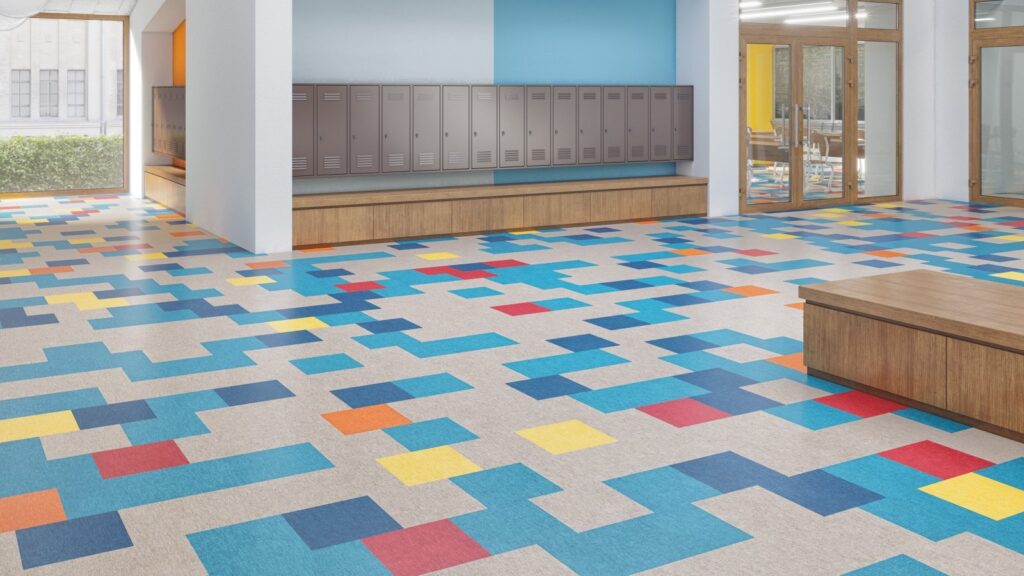
Different colors and patterns available in the market
When it comes to VCT flooring, the choices are endless. From bold, vibrant colors to subtle neutrals, this type of flooring offers a wide range of options to fit any design style or aesthetic preference. Some popular color options include shades of blue, green, grey, and even pink!
But it’s not just about the color – VCT flooring also comes in a variety of unique patterns and designs. Whether you prefer a classic checkerboard look or something more abstract and modern, there is sure to be a pattern that catches your eye.
How to choose the right color and pattern for your space
Choosing the right color and pattern for your space can be overwhelming – but it doesn’t have to be! Start by considering the overall style and theme of your room.
If you’re going for a sleek, modern look, consider solid black or white tiles with minimal texture. If you want something bolder and more playful, opt for colorful tiles in a fun pattern like stripes or polka dots.
It’s also important to think about the size of your space. If you have a smaller room or area that you want to make appear larger, choose lighter colored tiles with minimal patterns.
Larger spaces can handle darker colors and more intricate designs without feeling too overwhelming. Ultimately, choosing VCT flooring is all about expressing yourself creatively while still maintaining practicality and functionality within your space.
Examples of how VCT flooring can enhance the overall look and feel of a room
VCT flooring has become increasingly popular among interior designers due to its versatility in enhancing any space – from homes to offices to retail stores. One example where VCT flooring can truly shine is in an educational setting like a school or university building. Brightly colored tiles in playful patterns can help create a fun and engaging learning environment for students of all ages.
Another creative use of VCT flooring is in retail spaces such as fashion boutiques or coffee shops. Unique color combinations and bold patterns can draw customers in and enhance the overall shopping experience.
No matter the space, VCT flooring has the ability to transform it into something special with its wide range of colors, patterns, and designs. So why settle for dull and uninspiring floors when you can elevate your space with VCT flooring?
Maintenance and Care for VCT Flooring
Cleaning Techniques to Keep Your Floors Looking New
When it comes to maintaining your VCT flooring, the most important step is to keep it clean. To do that, first sweep or vacuum the floors to remove all dirt and debris. Then, use a damp mop with a pH-neutral cleaner specifically designed for VCT flooring.
Avoid using any harsh chemicals or abrasive cleaning tools like steel wool or scrub brushes as they can damage the surface of the floor. For tougher stains or spills, use a mild detergent mixed with warm water and apply it directly on the spot.
Let it sit for 5-10 minutes before wiping it away with a cloth or mop. Ensure you rinse well with clean water after cleaning.
Tips on How to Prevent Scratches, Scuffs, and Other Damages
VCT flooring is durable but still susceptible to scratches and scuffs from sharp objects like high heels or furniture legs. To prevent these damages, consider placing felt pads under furniture legs and using mats at entryways to capture any dirt or debris that could scratch the surface of your floor.
Avoid dragging heavy objects across your VCT floors as they can leave deep scratches on its surface easily, even if your floor looks tough enough. If you have pets at home, ensure their nails are kept trimmed regularly so that they cannot scratch up your floors accidentally while running around in excitement.
Common Mistakes to Avoid When Cleaning or Maintaining Your Floors
One common mistake people make when cleaning their VCT flooring is using too much water during mopping. Excessive water can seep into cracks in between tiles causing them loosened over time which may eventually lead into having them cracking altogether.
Another common mistake is using unapproved cleaners that are unsuitable for use on VCT floors such as bleach which can stain your floors or even cause discoloration over time. Avoid using abrasive cleaners and scrubbing brushes on your floor as they can easily scratch and damage the surface.
Taking good care of your VCT flooring is essential to ensure its longevity and beauty. By following these tips on cleaning techniques, damage prevention, and avoiding common mistakes, you’ll be able to enjoy a sparkling clean VCT floor for years to come!
Applications for VCT Flooring
Commercial spaces that benefit from using this type of flooring
VCT flooring has become increasingly common in commercial spaces due to its durability and low cost compared to other types of flooring. It is commonly used in healthcare facilities, schools, and retail stores.
The ability to customize the color and pattern of the tile also makes it ideal for corporate branding purposes. Its ability to resist stains also makes it ideal for high-traffic areas such as lobbies and hallways.
Residential spaces where it can be used effectively
While VCT flooring is often associated with commercial use, it can also be an excellent choice for residential spaces. Its low cost makes it an attractive option for homeowners on a budget who want a durable flooring option. Additionally, its water-resistant properties make it an excellent choice for kitchens, bathrooms, and laundry rooms where spills are likely to occur.
RELATED: How Much Extra Flooring to Buy?
Creative ways to use this type of flooring in unique settings
One creative way that VCT flooring can be used is in creating unique patterns or designs with different colored tiles. This can create a visually striking effect when done correctly, especially when paired with coordinating wall colors or decor elements. Another creative way to use VCT flooring is by installing them in unexpected places such as ceilings or on walls as decorative accents.
Frequently Asked Questions
What is the difference between LVT and VCT?
LVT stands for Luxury Vinyl Tile and is a type of vinyl flooring that replicates the look of natural materials like stone or wood. VCT, on the other hand, stands for Vinyl Composition Tile and is a more traditional vinyl flooring made primarily of limestone and other filler materials. LVT is typically thicker, more durable, and offers a wider range of design options compared to VCT.
Is VCT the same as vinyl flooring?
VCT is a type of vinyl flooring, but not all vinyl flooring is VCT. Vinyl flooring is a broader category that includes various types such as luxury vinyl tile (LVT), sheet vinyl, and vinyl plank flooring.
What are the disadvantages of VCT flooring?
Some disadvantages of VCT flooring include its susceptibility to scratches, scuffs, and staining. It requires regular waxing and polishing for maintenance, and the installation process can be more labor-intensive compared to other types of flooring.
Is VCT flooring waterproof?
VCT flooring is not inherently waterproof. While it can resist water to some extent, it is not completely impervious. If exposed to excessive moisture or standing water, VCT flooring can become damaged and require replacement.
Which is better LVP or LVT?
The choice between LVP (Luxury Vinyl Plank) and LVT (Luxury Vinyl Tile) depends on personal preferences and specific requirements. LVP mimics the appearance of hardwood planks, while LVT replicates the look of various tile materials. LVP is typically preferred in areas where a wood-like aesthetic is desired, while LVT is popular for creating the appearance of stone or ceramic tiles.
What is better LVP or LVT vs laminate?
The choice between LVP/LVT and laminate depends on factors such as durability, water resistance, and design options. LVP and LVT are generally more water-resistant and durable than laminate flooring. They also offer a wider range of design choices and can better mimic natural materials like wood or stone.
Conclusion
VCT flooring is a versatile and affordable option that has become increasingly popular due to its durability and customization options. While often seen as a commercial only product there are many residential applications particularly in high traffic areas like entryways or bathrooms where spills are likely.
With proper maintenance and care, this type of flooring can last for many years while maintaining its original appearance. Consider using VCT next time you’re looking for a new floor covering!

